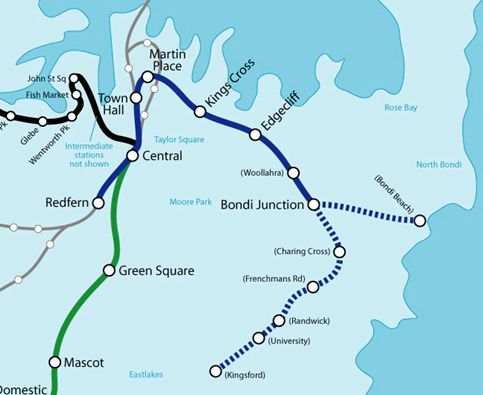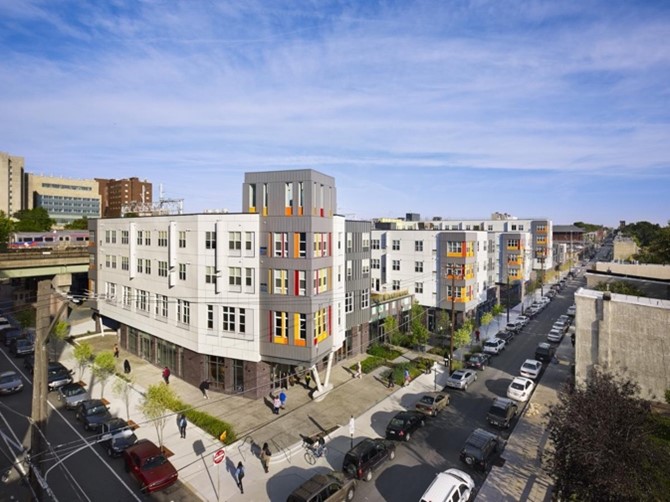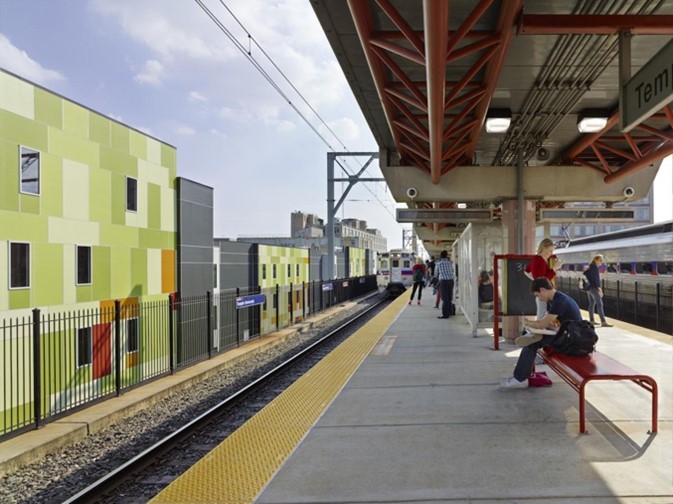YIMBY Qld: Opposition to the Gold Coast Light Rail
In the first of our new ‘If we’re saying no, what are we saying yes to?‘ series, we discuss the opposition to the Gold Coast Light Rail and
why saying YES to good transport infrastructure is a win for
the people.
The Gold Coast Light Rail currently spans a network of over 20km and contains 19 stations between the termini at Broadbeach South and Helensvale. Interconnecting tourism, retail and business precincts, the light rail has been a vital city-building infrastructure on the glitter strip.
Significant year-on-year growth in ridership occurred prior to the onset of the COVID-19 pandemic, recording over 8.4 million trips during 2019/20. The extension of the network north to Helensvale enabled direct public transport access to Brisbane and facilitated over 700,000 transfers to and from heavy rail in 2019/20. Planned extensions of the light rail south to Burleigh Heads is forecasted to generate over $1.2 billion in economic benefits, more than 25,000 additional public transport trips per day and remove over 8,000 daily car trips. The transformative benefits derived from Gold Coast Light Rail are intended to spread across the city, with the Gold Coast Transport Strategy 2031 envisaging expansions to Coolangatta, Robina, Nerang, Bundall and Biggera Waters. Whilst 63% of residents are supportive of the light rail expansion, the project has come under immense scrutiny from local community groups.

Save our Southern Gold Coast are a community group who have espoused a ‘Trams Outta Palmy’ rhetoric in opposition to Stage 4, connecting Burleigh Heads to Coolangatta. A recent community meeting attracted an audience of over 600 locals vehemently opposing the light rail, which will supposedly detract from “the vibe” of the Southern Gold Coast and infringe upon beach access. Whilst the proposed extension intends to reduce traffic congestion through public and active transport improvements, it is argued that the light rail “just isn’t excellent transport”. A tragic encapsulation of NIMBYism is demonstrated below, opposing the delivery of public transport and yet advocating for climate action. ‘Sure, climate action is great, just not when it affects me’.

NIMBY sentiment towards public transport expansion is nothing new, however. Rail expansion proposals in Sydney’s eastern suburbs and northern beaches have endured a similar plight.
Bondi Beach, despite being one of Australia’s premier tourist destinations, does not have a direct rail connection. Sydney’s Eastern Suburbs line terminates at Bondi Junction, approximately 3km away. However, a 1990s proposal to extend the line further east (depicted in dotted lines below) faced NIMBY opposition, based on fears regarding property prices and the stigmatisation of Western Sydney residents bringing crime to the area.

Despite proposals for a rail branch to Sydney’s Northern Beaches dating back to the Bradfield Scheme in the 1920s and being revived on numerous occasions, there is no sign of progress. Whilst many commuters are supportive, the isolationism pushed by older populations has stifled any possible expansions, for reasons comparable to those pitched by Bondi residents.

If we’re saying no to Gold Coast Light Rail, what are we saying yes to?
It is important to consider this hypothetical when opposing developments and infrastructure. That is not to say that any opposition is inherently wrong; constructive community engagement is essential in delivering sustainable development. However, if opposition is based in self-interest rather than genuine beliefs, this is not constructive and simply moves the problem elsewhere. Locals oppose density, instead we turn to sprawl. Locals oppose bikeways, we prioritise car parking and so forth. The problem is not solved, it is simply moved somewhere else.
The reality is that without investment in light rail along the Burleigh Heads – Coolangatta corridor, traffic congestion will further intensify. Induced demand refers to the increase in traffic volume due to increased road supply. The same outcome arises from a lack of investment in public transport relative to road infrastructure. The Gold Coast is subject to several proposed motorway projects, with $1.53 billion earmarked for the Coomera Connector and $1 billion for upgrades between Varsity Lakes and Tugun. An over-emphasis on road infrastructure catalyses a reliance on motor vehicles, facilitates urban sprawl and increases the distances between land uses. All of these outcomes ultimately serve to increase car use, travel distances and fuel consumption.
YIMBY QLD says YES to the Gold Coast Light Rail
Over 6.5 million passengers land annually at the Gold Coast Airport, which has long been crying out for a direct public transport connection. By consequence of the light rail, visitors will have direct access to tourist attractions and accommodation, and an attractive means of traversing the glitter strip – without requiring a car. Investment in public transport has profound benefits – not limited to travel time. Walkable precincts can be oriented around light rail stops, enabling housing development and a greater mix of uses and activities for locals to enjoy.
An exemplar implementation of transit-oriented development, of a smaller scale, is North Philadelphia’s Paseo Verde. The 1.9ha precinct contains a mix of affordable and market-rate housing with retail, community and commercial activities in close proximity. Labelled as a “model for urban revitalization”, the development maximises transport connectivity to foster community, whilst being commensurate with surrounding development.
Investment in world-class public transport infrastructures, such as Gold Coast Light Rail, have enormous potential to transform communities, beyond travel time benefits. Previous expansion of the network to Helensvale had significant city-shaping benefits; could similar benefits be realised for the southern Gold Coast? Providing a north-south public transport spine, spanning 40km between Helensvale and Coolangatta will interconnect tourism, residential and centre activities and enable opportunities for future expansion of the network to the west. Providing direct transit access between the Gold Coast Airport and locations such as Surfers Paradise and Broadbeach will have a profound benefit to the city. Immense opportunities can be unlocked for housing and precinct revitalisation in proximity to future light rail stops.
The potential benefits of Gold Coast Light Rail expansion are staggering, and squandering this opportunity would condemn residents of the southern Gold Coast to enduring traffic snarls along the M1 and hamper the progression of public transport on the Gold Coast.
We hope to see the benefits to Gold Coast Light Rail extend south as soon as possible!
YIMBY QLD urges locals to throw their support behind the Gold Coast Light Rail by writing to their local Councillors and State MPs. There is a wealth of support and demand for light rail on the Gold Coast and it is vital that the voices of supporters are heard.
This is the first of a new series for YIMBY Qld; If we're saying no, what are we saying yes to?







